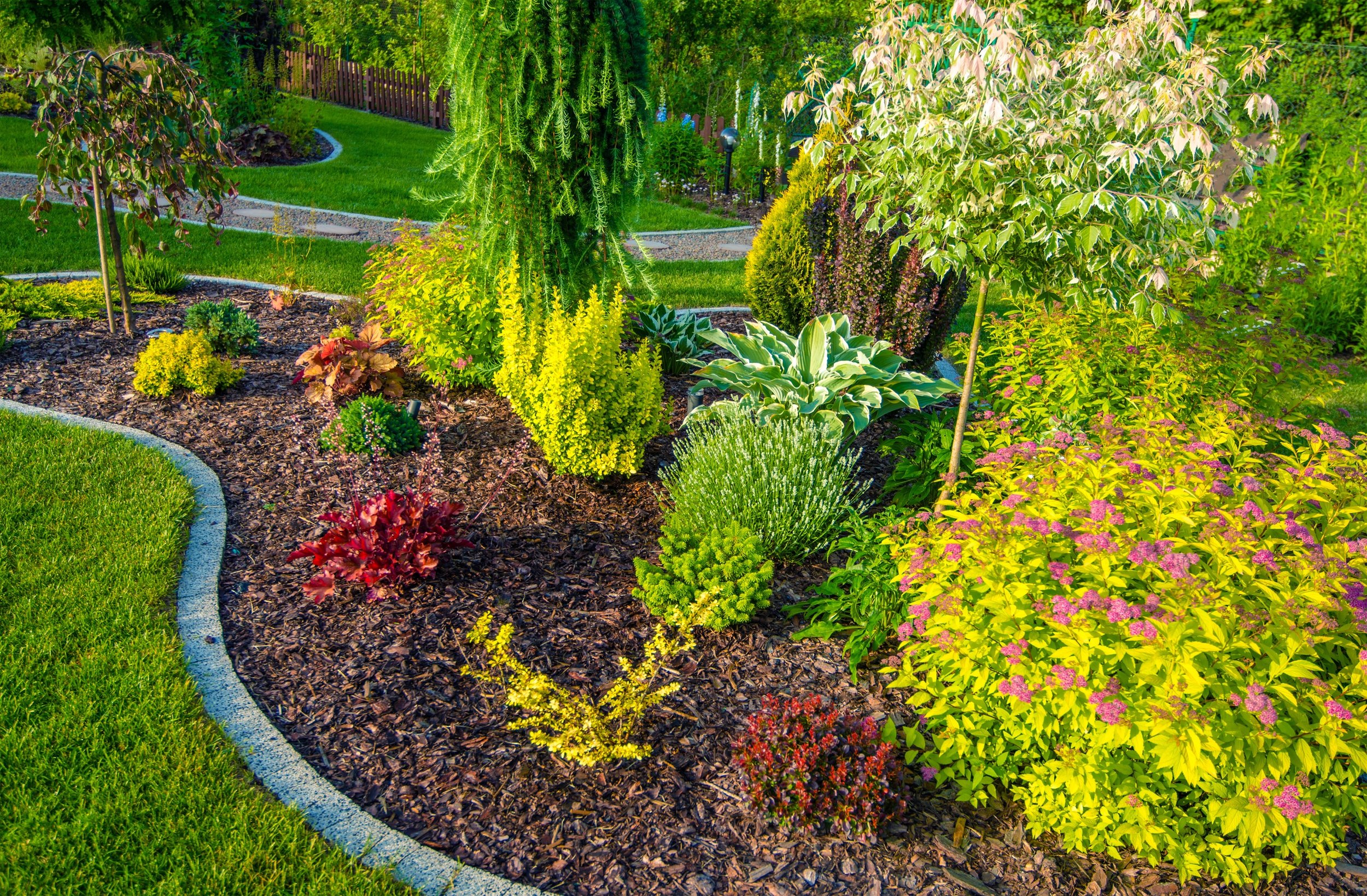Elevate Your Building's Visual With Sustainable Landscaping Designs and Eco-Friendly Practices

Advantages of Lasting Landscape Design
Implementing lasting landscaping methods not only preserves natural sources however also advertises biodiversity and enhances overall environmental wellness. One substantial advantage is the decrease of water usage with the usage of drought-resistant plants, rain yards, and effective irrigation systems.
Additionally, lasting landscaping can boost soil health by reducing making use of chemical plant foods and pesticides, therefore creating a much healthier environment for plant development and valuable soil microorganisms. This, in turn, boosts the overall durability of the landscape to stand up to environmental stress factors and climate modification influences - landscaping companies Jacksonville. In addition, sustainable landscape design practices can draw in varied wild animals, including pollinators like butterflies and , cultivating a more balanced and dynamic ecological community within the property
Incorporating Native Plants
To build on the advantages of lasting landscape design, a critical emphasis on including native plants can even more enhance eco-friendly durability and promote biodiversity within the landscape. Native plants are species that naturally occur in a particular location and have actually advanced to grow in the neighborhood environment, dirt problems, and environment. By consisting of indigenous plants in landscape design layouts, home proprietors can minimize water usage, reduce the requirement for chemical pesticides and fertilizers, and sustain the neighborhood wild animals population.
Including indigenous plants additionally assists in protecting the unique personality and identification of an area's vegetation. These plants often call for less upkeep when established, making them a lasting and affordable landscaping remedy in the future. Additionally, indigenous plants can attract native pollinators like bees and butterflies, adding to the general health of the ecosystem.
When choosing indigenous plants for landscape design projects, it is vital to pick types that are well-suited to the details ecological conditions of the website. Consulting with local baby rooms or organic gardens can supply valuable advice on selecting the appropriate indigenous plants for a specific area. By integrating indigenous plants into landscape design designs, homeowner can produce lovely, sustainable exterior spaces that benefit both the area and the atmosphere.

Water Preservation Strategies
Reliable watering techniques play a vital function in sustainable landscape design techniques, making certain optimum water conservation efforts in outdoor rooms. Implementing techniques such as drip watering, rain harvesting, and wise irrigation systems can significantly lower water waste while preserving a healthy landscape. Trickle watering supplies water directly to the roots of plants, reducing dissipation and overflow. Rainwater collecting includes accumulating rain from roofings and storing it for later usage in irrigation, reducing the dependence on community water resources. Smart irrigation systems make use of weather condition data and dirt moisture degrees to adjust sprinkling timetables, stopping overwatering and promoting water performance.
In enhancement to innovative watering approaches, xeriscaping is one more water-saving landscaping strategy that concentrates on making use of drought-resistant plants, mulch, and reliable irrigation to produce a low-water landscape design - bush removal Jacksonville. By selecting indigenous plants that are well-suited to the neighborhood climate and soil problems, homeowner can reduce the requirement for too much watering, ultimately saving water and advertising a lasting exterior environment
Eco-Friendly Hardscaping Ideas
Enhancing outside areas with environmentally friendly hardscaping features can contribute dramatically to lasting landscaping practices. Choose for products like recovered timber, recycled concrete, or all-natural rock to lessen ecological effect when taking into consideration hardscaping elements. These products not just include an one-of-a-kind visual attract your exterior room yet additionally lower the demand for brand-new sources removal.
Applying absorptive leading options such as crushed rock or absorptive concrete can help in reducing water drainage and advertise groundwater recharge. These alternatives permit rainwater to leak into the ground, stopping disintegration and decreasing the worry on stormwater systems.
Incorporating native plants into hardscaping layouts can even more improve eco-friendliness by supporting neighborhood wildlife and reducing the demand for extreme watering or chemical therapies. By integrating eco-friendly walls or upright gardens, you can present a lot more greenery right into metropolitan settings, enhancing air quality and biodiversity.
Including energy-efficient illumination, such as solar-powered LEDs, right into hardscaping styles can reduce power usage and lower your residential property's carbon footprint. Focusing on environment-friendly hardscaping ideas not just improves the beauty of your exterior space however additionally demonstrates a dedication to environmental stewardship.
Upkeep Tips for Sustainable Landscapes

Routinely trim plants to advertise healthy and balanced development and avoid overgrowth that can lead to pest diseases or invasions. Use natural plant foods to nurture the dirt and plants without hazardous chemicals that can leach right into the setting.
Conclusion
To conclude, sustainable landscape design methods supply various advantages for homeowner, from boosting the aesthetic charm of the environments to advertising ecological conservation. By including native plants, executing water conservation methods, and using environment-friendly hardscaping concepts, property owners can create gorgeous landscapes that are also environmentally responsible. With proper upkeep, lasting landscapes can contribute and prosper to a much healthier environment for both people and wildlife.
Additionally, sustainable landscape design can enhance soil health by minimizing the usage of chemical plant foods and pesticides, thereby creating a much healthier setting for plant development and valuable dirt organisms.To build upon the advantages of sustainable landscaping, a critical emphasis on incorporating native plants can further boost environmental resilience and advertise biodiversity within the landscape. By including native plants in landscape design styles, residential property owners can reduce water use, lessen the requirement for chemical pesticides and fertilizers, and sustain the local wild animals population.
These plants commonly require much less maintenance as soon as established, making them a cost-effective and lasting landscaping service in the lengthy run. By integrating native plants into landscape design styles, property proprietors can create attractive, sustainable exterior rooms that benefit great site both the setting and the community.